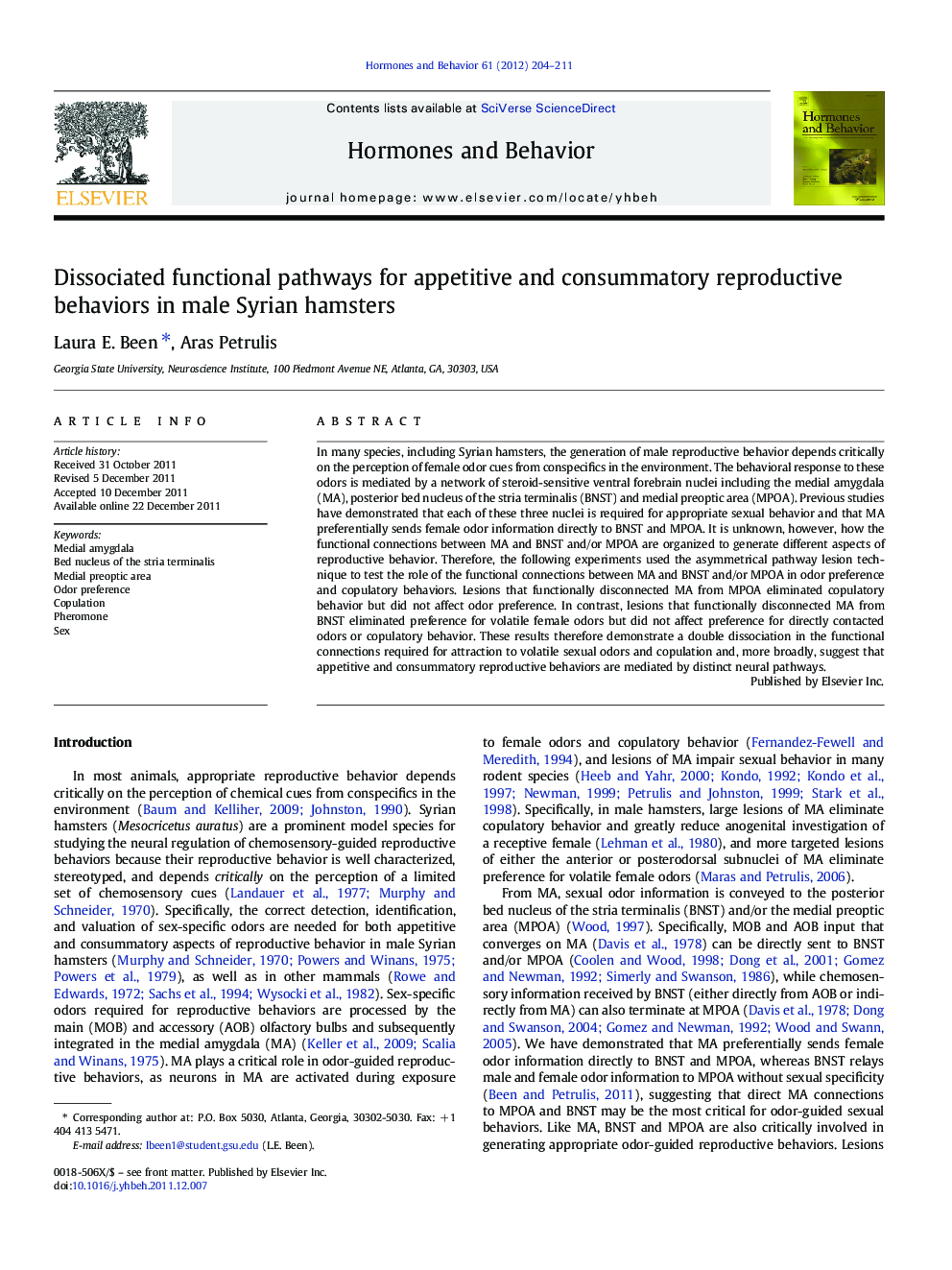| کد مقاله | کد نشریه | سال انتشار | مقاله انگلیسی | نسخه تمام متن |
|---|---|---|---|---|
| 323145 | 540512 | 2012 | 8 صفحه PDF | دانلود رایگان |

In many species, including Syrian hamsters, the generation of male reproductive behavior depends critically on the perception of female odor cues from conspecifics in the environment. The behavioral response to these odors is mediated by a network of steroid-sensitive ventral forebrain nuclei including the medial amygdala (MA), posterior bed nucleus of the stria terminalis (BNST) and medial preoptic area (MPOA). Previous studies have demonstrated that each of these three nuclei is required for appropriate sexual behavior and that MA preferentially sends female odor information directly to BNST and MPOA. It is unknown, however, how the functional connections between MA and BNST and/or MPOA are organized to generate different aspects of reproductive behavior. Therefore, the following experiments used the asymmetrical pathway lesion technique to test the role of the functional connections between MA and BNST and/or MPOA in odor preference and copulatory behaviors. Lesions that functionally disconnected MA from MPOA eliminated copulatory behavior but did not affect odor preference. In contrast, lesions that functionally disconnected MA from BNST eliminated preference for volatile female odors but did not affect preference for directly contacted odors or copulatory behavior. These results therefore demonstrate a double dissociation in the functional connections required for attraction to volatile sexual odors and copulation and, more broadly, suggest that appetitive and consummatory reproductive behaviors are mediated by distinct neural pathways.
► Lesions that functionally disconnect MA from MPOA eliminate copulation but not odor preference.
► Lesions that functionally disconnect MA from BNST eliminate odor preference but not copulation.
► The pathways required for appetitive and consummatory reproductive behaviors are dissociated.
Journal: Hormones and Behavior - Volume 61, Issue 2, February 2012, Pages 204–211